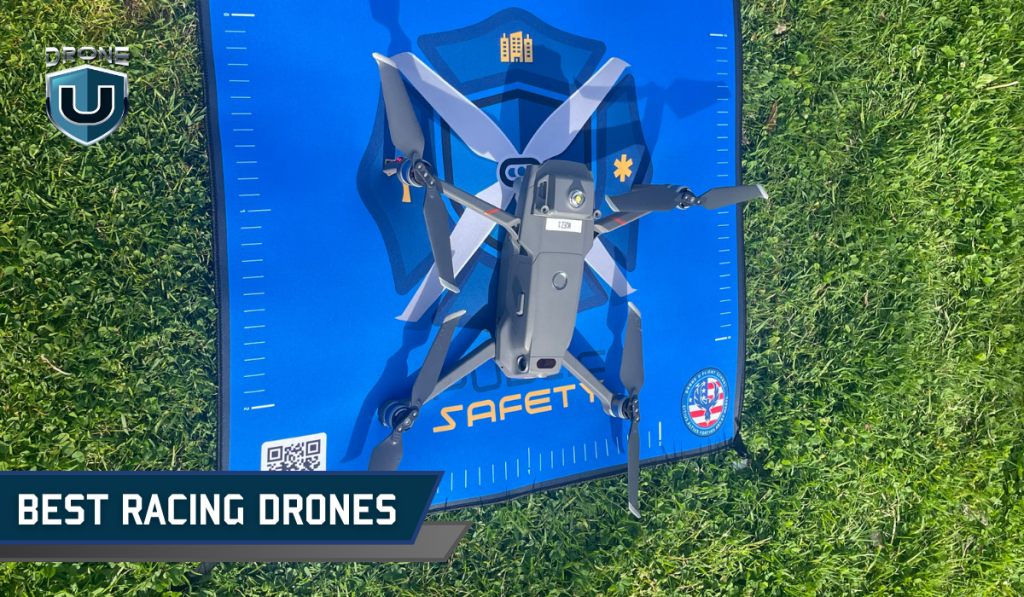
Imagine this: you’re gripping the controls, heart pounding as a sleek drone screams through the air. You’re weaving through a crazy course, dodging obstacles and pulling off moves that would make an action star jealous. That’s the rush of drone racing.
Drone racing isn’t just about piloting high-tech machines; it’s about the adrenaline, the strategy, and the satisfaction of mastering a skill.
The coolest part?
You get a first-person view, putting you right in the pilot’s seat. It’s like stepping into a video game, but way more intense!
In this article, we will reveal the best racing drones in the market, along with a glimpse into the future of this thrilling industry.
Let’s begin with understanding what racing drones are.
What are Racing Drones?
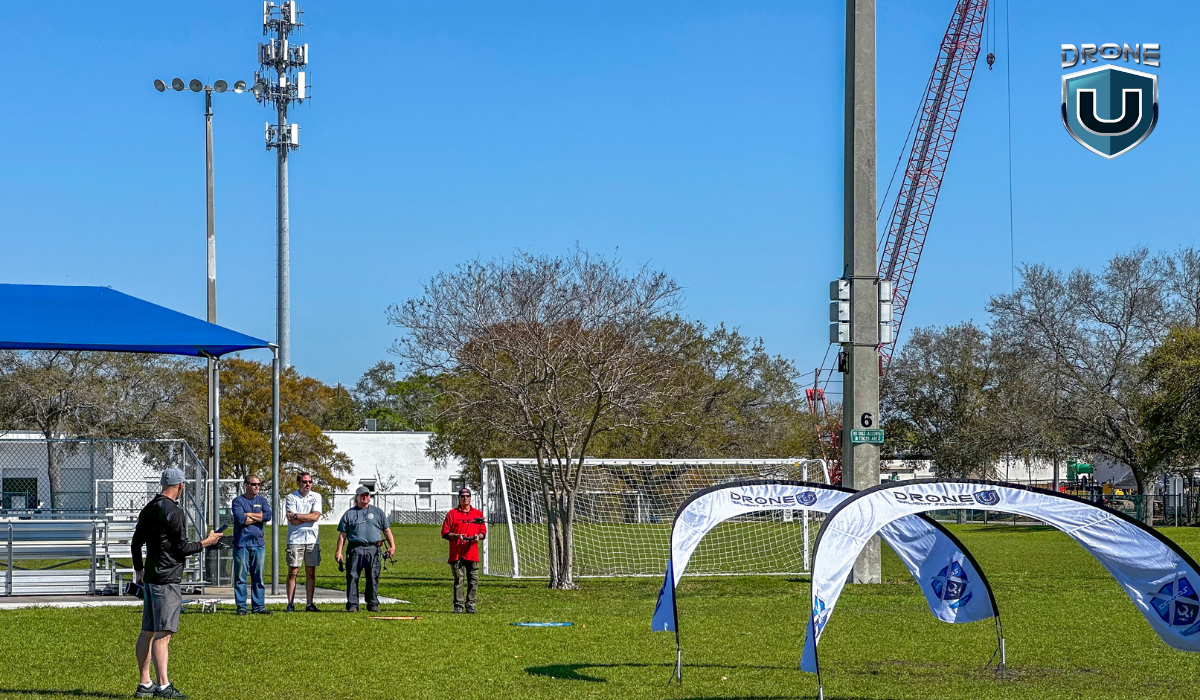
Racing drones are small, agile, and fast unmanned aerial vehicles designed for speed, maneuverability, and aerial stunts. These UAVs are engineered to excel in the thrilling sport of drone racing.
Talking about Drone Racing unquestionably brings up the idea of FPV or First Person View.. So let me clarify it.
FPV technology is a subset of racing drones. You can wear FPV goggles that provide a live video feed from a camera mounted on the drone, giving you a cockpit-like view of the action. This immersive experience is essential to the excitement and skill of drone racing.
Racing drones are all geared toward optimal performance…kinda like the way fighter jets are optimized for the battlefield.
Unlike their recreational counterparts, these birds are constructed with lightweight materials like carbon fiber and feature powerful brushless motors. They also come equipped with sophisticated flight controllers and high-quality cameras.
Clocking in at over 100 miles per hour, racing drones slice through the air like bullets. Their nimble movements and lightning-fast speed redefine what’s possible in competitive drone racing.
Evolution of Racing Drones
The origins of drone racing can be traced back to the early 2010s. When hobbyists began experimenting with attaching cameras to their remote-controlled aircraft. This allows them to experience a first-person perspective during flight.
As technology advanced and dedicated racing drones hit the market, the sport rapidly gained traction. Hence, leading to the formation of professional leagues and high-profile events.
Watch this video to find out if buying a racing drone is a good idea:
Factors to Consider While Choosing a Racing Drone
In the exhilarating world of drone racing, having the right drone makes all the difference.
Consider the following factors before you choose the perfect drone for racing:
1. Budget
Determine your budget and look for a drone that fits within that range while still offering the features and performance you need.
2. Skill Level
If you’re a beginner, consider starting with a more affordable and durable drone designed for beginners. These drones are typically easier to fly and repair, allowing you to learn and practice without risking an expensive investment. As your skills improve, you can upgrade to a more advanced racing drone.
3. Flight Time and Battery Life
Racing drones typically have shorter flight times compared to other types of drones due to their powerful motors and high speeds. Look for drones with longer flight times (5-10 minutes is common) and consider purchasing additional batteries to extend your flying sessions.
4. Build Quality and Durability
Racing drones are subjected to crashes and impacts, so a durable frame and high-quality components are essential. Look for drones made with sturdy materials like carbon fiber and consider the availability and cost of replacement parts.
5. Camera and Video Quality
If you plan to record your flights or participate in racing events, consider the drone’s camera quality and video transmission range. Higher-end drones often have better cameras and longer video transmission distances.
6. Size and Portability
Racing drones can be quite compact, but larger models may offer better stability and performance. Consider the size and portability if you plan to transport the drone frequently.
7. Upgradability and Customization
Many racing drones allow for upgrades and customization, such as changing motors, propellers, or flight controllers. If you plan to modify or tune your drone, look for models with an active community and available aftermarket parts.
8. Safety and Legal Considerations
Familiarize yourself with local laws and regulations regarding drone use, especially for racing or high-speed flights. Proper safety equipment, such as goggles and radios, may also be necessary.
Equipped with this foundation, let’s dive into the best racing drones you can pick to master the skies!
The Best Racing Drones of 2024
Here’s a look at the best drones for racing, each with a special set of characteristics to suit the needs of any beginner:
1. iFlight Nazgul5 HD
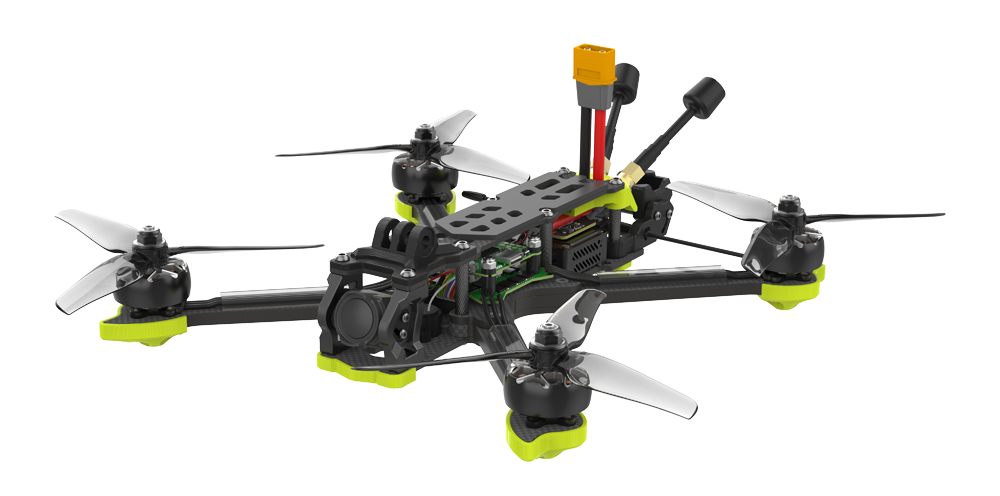 Source: iFlight
Source: iFlight
The Nazgul5 V3 HD is a super cool quadcopter packed with awesome features. It’s all set up and ready to go right out of the box – just bind it to your controller and you’re ready to fly! This quad is super powerful, making it a total standout. So, if you’re looking for a quad that’s ready for action, the Nazgul5 V3 HD is the one to get.
Specifications:
- Takeoff Weight: Approx. 457 g
- Max Flight Distance: 5 km
- Max Wind Speed Resistance: Level 7
- Operating Temperature Range: -10° to 40° C (14° to 104° F)
- Antennas: 2
Pros:
- Exceptional speed and agility
- Robust carbon fiber frame
- Powerful video transmitter
Cons:
- Expensive
- The steep learning curve for beginners
2. DJI Avata
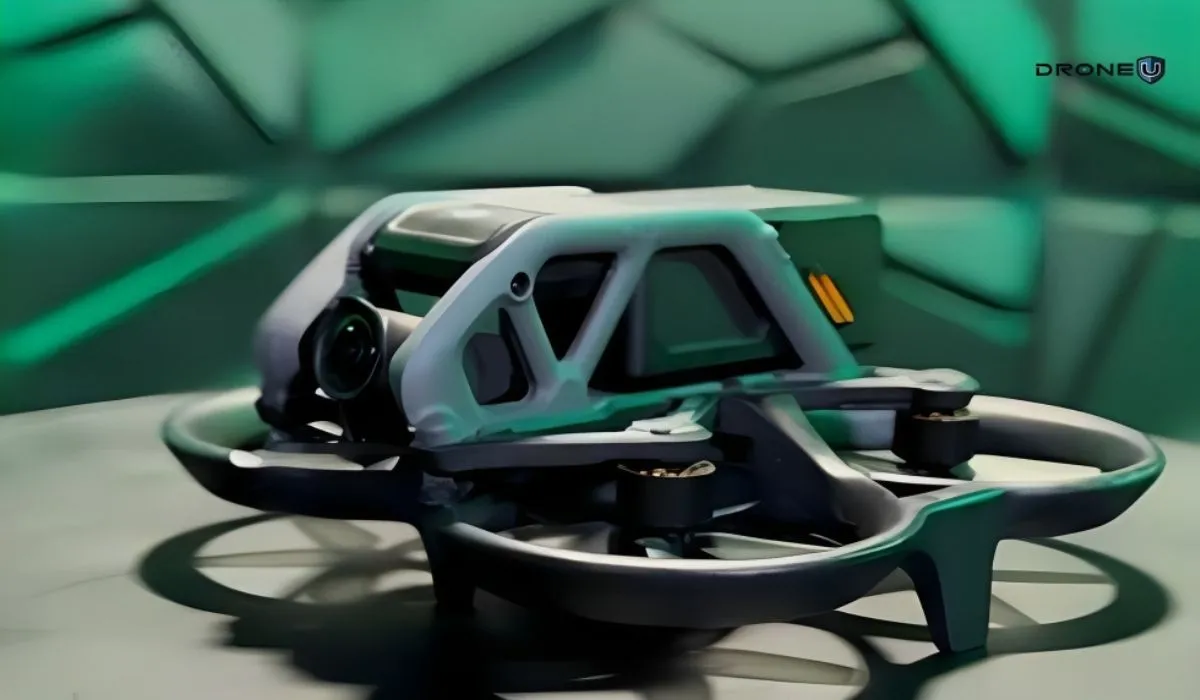
This drone is a great choice for both beginners and experienced racers due to its durability, stability, and immersive flight experience. It also boasts a great battery life and a hover mode for those in-flight adjustments. It strikes a great balance between performance and ease of use.
Specifications:
- Sensor: 1/1.7-inch CMOS, Effective Pixels: 48 MP
- Still Photography Mode: Single Shot
- Photo Format: JPEG
- Video Resolution: 4K@30/50/60fps
- Takeoff Weight: Approx. 410 g
- GNSS: GPS + Galileo + BeiDou
Pros:
- Built-in propeller guard for some collision protection.
- Get shake-free videos even during aggressive maneuvers.
- Easy to carry to races and practice sessions.
Cons:
- Shorter Flight Time
- Extra Controller Needed for Full Manual Mode
- Gimbal has a limited range of motion compared to some higher-end racing drones.
3. Diatone GTB 339
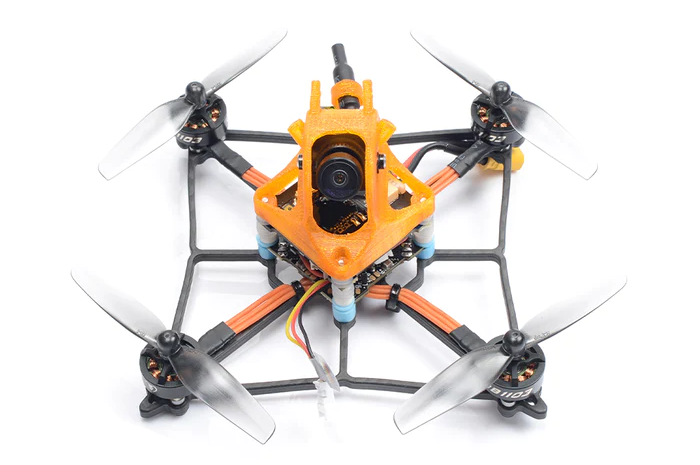 Source: Diatone
Source: Diatone
The Diatone GTB 339 is a small but mighty FPV racing drone that’s ready to zoom right out of the box. It’s famous for its awesome performance and top-notch parts. Packed with fantastic features, this drone is all set for racing whenever you are.
Specifications:
- MCU: MAMBA F411 NANO AIO
- MAMBA F411AIO
- STM32F411
- Input voltage 2-4S Lipo
- Gyro: MPU6000
- 2x UART ports
Pros:
- Compact and lightweight
- Affordable price point
- Durable plastic frame
- Suitable for indoor racing
Cons:
- Limited top speed compared to larger drones
- Lower camera quality
4. ImmersionRC Vortex 285
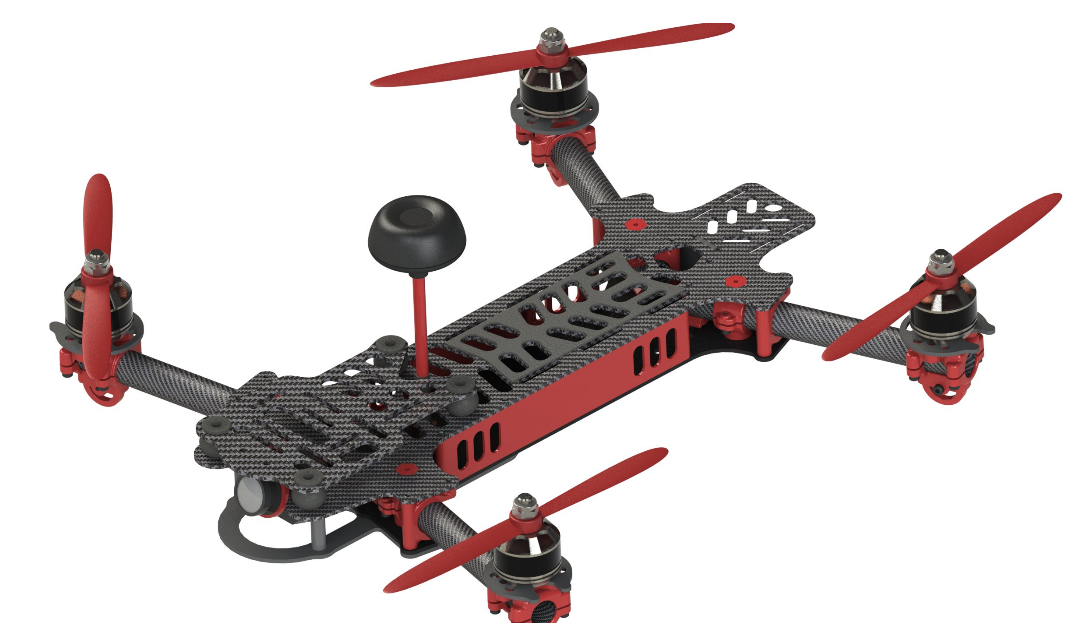 Source: ImmersionRC
Source: ImmersionRC
The ImmersionRC Vortex 285 is a cool mini quadcopter made just for FPV racing. What’s neat about it is its foldable frame, making it super handy. It’s super user-friendly too, with a USB port that makes programming a breeze. Plus, it lets you choose from different camera options to fit your style. If you’re into racing, this drone could be your perfect partner!
Specifications:
- 285-sized foldable Mini-Quad
- Carbon Fiber and custom-injected plastic design
- Integrated Flight Controller
- Integrated full-graphic OSD
Pros:
- Exceptional top speed
- High-quality 4K camera
- Powerful video transmitter
- Durable carbon fiber frame
Cons:
- Large size may limit maneuverability
- Expensive
- Steep learning curve
5. Diatone Roma F5
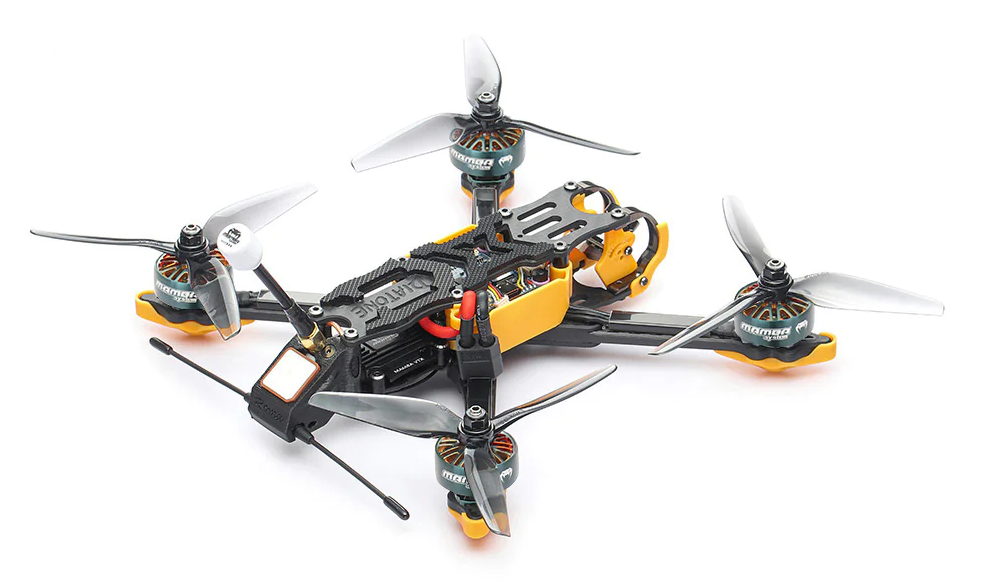 Source: Diatone
Source: Diatone
The Diatone Roma F5 V2 Analog is a freestyle quadcopter that’s got everything you’ve been dreaming of. Built for FPV freestyle fun, it gives you two power options: 2450KV for 4S batteries or 1770KV for 6S ones, so you can zoom through the air just the way you like. The V2 model is even better than before, with upgrades that make flying a blast. So, quickly grab the drone to catch all the action without missing a beat.
Specifications:
- Camera: RUNCAM PHOENIX2
- Antenna: MAMBA Ultra RHCP
- VTX: MAMBA Ultra 1000MW
- FC: MAMBA MK4 F722 APP
- ESC: MAMBA F55-128K ESC
Pros:
- Balanced performance and affordability
- Durable plastic frame
- Good battery life
Cons:
- Average camera quality
- Limited top speed compared to carbon fiber drones
6. GEPRC Rocket
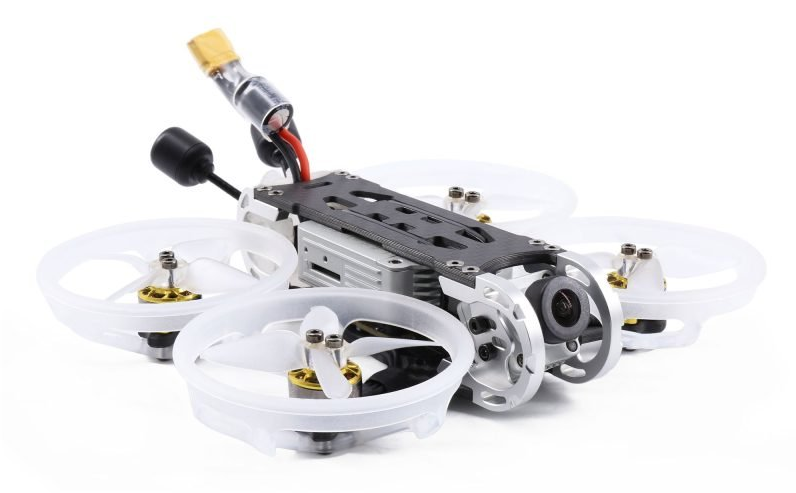 Source: GEPRC
Source: GEPRC
ROCKET is a tiny HD FPV system micro quad created by GEPRC. You can pick from two cool versions: ROCKET PLUS and ROCKET LITE, each with its perks. ROCKET PLUS is a top-notch choice, packed with fantastic features. It’s super lightweight at 148g and offers tons of fun.
Specifications:
- Frame: GEP-RP2
- Stack: GEP-20A-F4 AIO
- MCU: F411
- Gyro: 6-Axis
- Wheelbase: 112mm
- FPV System: DJI FPV Air Unit
- Weight: 148g (without battery)
Pros:
- Compact and agile
- High-quality 2.7K camera
- Affordable price point
- Suitable for indoor racing
Cons:
- Limited top speed due to smaller size
- Shorter battery life
Now let’s move to the next section which talks about the future of drone racing.
Future Trends and Innovations of Racing Drones
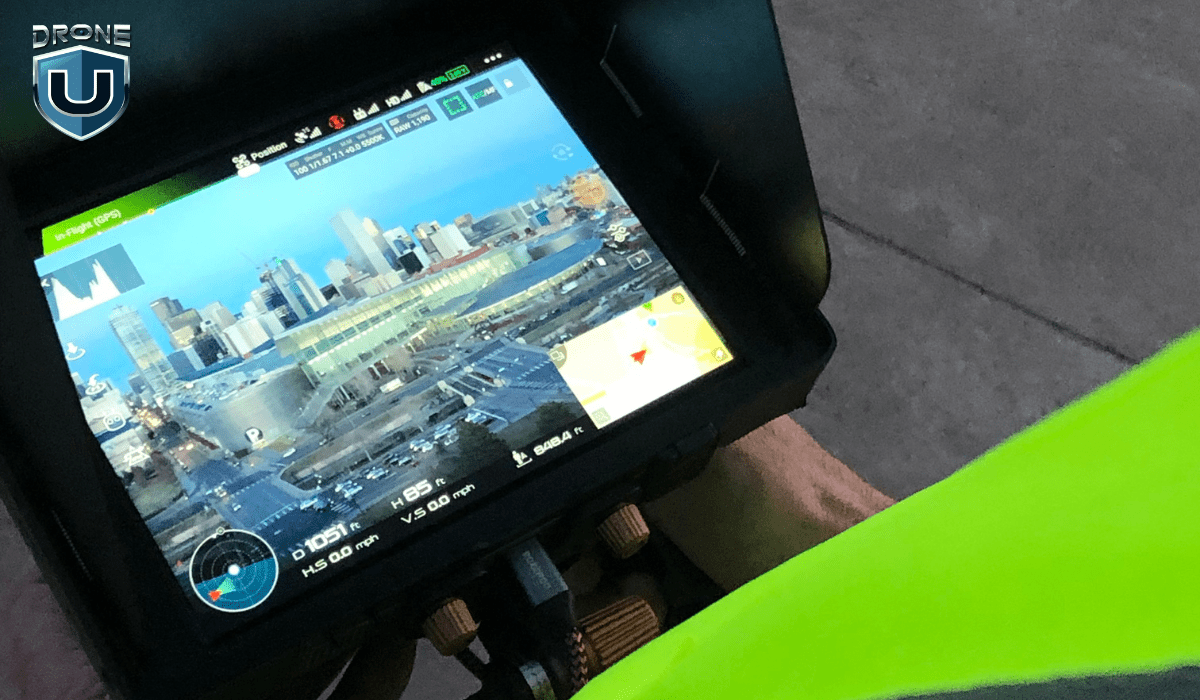
The realm of drone racing is rapidly evolving, with advancements and innovations. Newer trends are shaping its trajectory. Here’s a glimpse into the future trends and innovations that are set to redefine the sport:
Emerging Technologies in Drones
The future of racing drones is bright, with emerging technologies pushing the boundaries of what’s possible. We’re seeing drones becoming lighter, faster, and more agile. All thanks to advancements in materials science and aerodynamic design.
Battery technology is also making leaps. Thus, offering longer flight times and shorter charging periods. Furthermore, innovations in FPV (First Person View) technology are enhancing the immersive experience for pilots, with higher-resolution video feeds and lower latency rates. As these technologies evolve, these drones will become even more thrilling to fly and compete with.
Impact of AI and Machine Learning
AI and machine learning are beginning to play significant roles in drone racing. These technologies are improving drone stability and flight efficiency. Hence, enabling autonomous drones capable of competing against human pilots.
AI systems can analyze countless flight patterns and environmental factors to optimize performance. This leads to drones that can navigate courses with unprecedented precision and speed. Moreover, machine learning algorithms can customize drone behavior to suit your preferences. Thus, creating a more personalized flying experience.
Environmental Sustainability Efforts
As drone racing grows, so does its environmental footprint. However, the industry is becoming increasingly aware of the need for sustainability. Efforts are underway to develop more eco-friendly materials for drone construction. Also, to recycle parts from retired drones.
Innovations in battery technology aim to extend flight times and reduce environmental impact through more efficient energy use and safer battery materials. These sustainability efforts are crucial for the sport’s long-term viability and acceptance.
Racing Drones Industry Growth
The racing drone industry is on an upward trajectory. Its growth is increasing popularity, technological advancements, and expanding applications beyond racing.
Drone racing leagues are gaining followers worldwide. Thus, attracting sponsorships and media coverage that rival traditional sports. The industry’s growth is also fueled by the use of racing drones in cinematography, environmental monitoring, and educational programs, broadening the scope of opportunities. As the sport continues to professionalize and gain mainstream acceptance. We can expect significant industry expansion and innovation.
Resources for Further Learning and Engagement
The journey into drone racing doesn’t end here. Numerous resources are available for you to dive deeper into this sport.
To gain practical experience and step-by-step instructions, check out Drone U Events and Online Courses.
So, gear up, fly safe, and let the good times roll!
Conclusion
If you are a beginner, you may lean towards models that offer ease of use and durability. Whereas experience prioritizes speed, agility, and advanced flight modes.
Regardless of your choice, it’s essential to remember that practice, patience, and a hunger for continuous learning are the keys to unlocking your true potential as a drone racing pilot.
The true joy of drone racing lies in finding the perfect balance between your aspirations and the capabilities of your machine. It’s a journey of self-discovery, where you must ultimately find the drone that resonates with your unique style and allows you to push the limits of what’s possible in the skies.
Frequently Asked Questions
1. What is the difference between a racing drone and a regular drone?
The main difference between a racing drone and a regular drone lies in their design and purpose. Racing drones are built for speed, agility, and performance. Thus, features powerful motors, responsive controls, and lightweight frames. Everything for competitive flying and maneuvering through intricate courses.
Regular drones, on the other hand, are designed for stability, ease of use, and capturing high-quality aerial footage. Thus, making them ideal for photography, videography, and recreational flying.
2. How fast can racing drones go?
Racing drones are capable of reaching impressive speeds. They often exceed 100 miles per hour (160 kilometers per hour) in professional races. The exact speed can vary depending on the drone’s design, the motors’ power, and the skill of the pilot.
3. Are racing drones difficult to fly?
Racing drones can be challenging to fly, especially for beginners. They require precise control and quick reflexes due to their high speeds and agility. Flying a racing drone effectively demands practice and a good understanding of its mechanics and flight dynamics. However, many pilots find the challenge rewarding as they develop their skills. Starting with a beginner-friendly racing drone or spending time on flight simulators can help ease the learning curve.
4. Can I use a racing drone for aerial photography?
While racing drones are primarily designed for speed and agility rather than photography. Some pilots do use them to capture dynamic, fast-paced footage that would be difficult to achieve with regular drones. However, racing drones typically have simpler cameras and may not offer the high-resolution. For professional-grade aerial photography, a regular drone equipped with a high-resolution camera and stability features is recommended.
5. What safety precautions should I take when flying a racing drone?
Safety is paramount when flying racing drones. Here are some key precautions to consider:
- Always fly in open, designated areas away from people, animals, and obstacles.
- Use spotters to keep an eye on the drone’s surroundings, especially when flying FPV (First Person View).
- Follow local regulations regarding drone flying, including altitude limits and no-fly zones.
- Wear appropriate safety gear, such as goggles and gloves, to protect against debris and propeller injuries.
- Conduct pre-flight checks to ensure your drone is in good working condition and all components are securely attached.
- Be mindful of battery safety, including proper charging, storage, and handling of LiPo batteries to prevent fires.
Adhering to these precautions can help ensure a safe and enjoyable experience for everyone involved in drone racing.







Add Your Comment